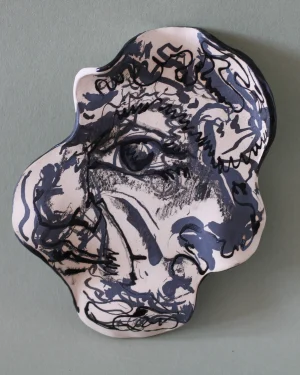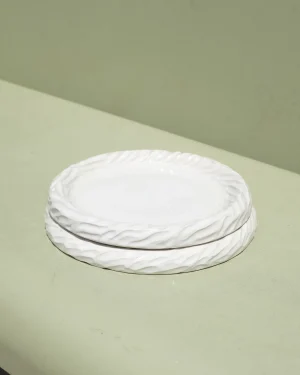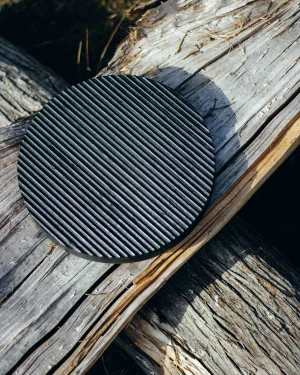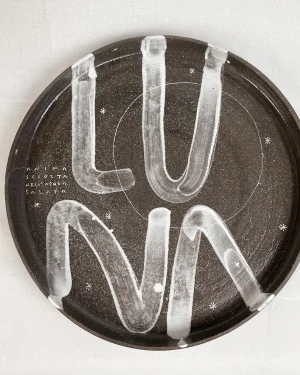-
 Free shipping
Free shippingMendi Porcelain Plate
€110 incl. tax -

Dyka Ceramic Centerpiece Bowl
€380 -
 In stock
In stockMarbled Dream #1 – Handcrafted Ceramic Plate
€182 incl. tax -
 In stock
In stockMarbled Dream #2 – Handcrafted Ceramic Illustrated Plate
€182 incl. tax -
 Free shipping
Free shippingPillow Tray Ultramarine – Design Tray
€143 incl. tax -
 Free shipping
Free shippingNatural Platter
€365 -
 In stock
In stockGolden Grace Plates – White Porcelain
€79 incl. tax This Piece has multiple variants. The options may be chosen on the Piece page -
 Free shipping
Free shippingMarble/Travertine Eclipse Bowls
€253 - €347 incl. tax This Piece has multiple variants. The options may be chosen on the Piece page -
 Free shipping
Free shippingNarrow Bowls
€253 - €347 incl. tax This Piece has multiple variants. The options may be chosen on the Piece page -
 In stock
In stockThe Hoop – Od Oka Ceramic Plate
€120 -
 Free shipping
Free shippingXL Narrow Bowls
€396 - €410 incl. tax This Piece has multiple variants. The options may be chosen on the Piece page -
 Free shipping
Free shippingOnda Series Ceramic Plate – Coal Black
€1.301 incl. tax -

Lips Plates – Blue Porcelain
€115 - €133 incl. tax This Piece has multiple variants. The options may be chosen on the Piece page -
 In stock
In stock“Beasts of Cappadocia – Snake” plate
€472 incl. tax -
 Free shipping
Free shippingFancy Platters
€2.210 incl. tax This Piece has multiple variants. The options may be chosen on the Piece page -
 In stock
In stockDia De Feira – Ceramic 3 Piece Set
€150 -
 In stock
In stock“Pigeon Nest” plate
€472 incl. tax -
 In stock
In stockX2 – Side Plate
€62 incl. tax This Piece has multiple variants. The options may be chosen on the Piece page -
 In stock
In stockWhite Porcelain Dinner Plate
€91 incl. tax -
 Sold
Sold“i Gusci”, Set Of 5 Porcelain Bowls – Gold
-

Lips Plates – White Porcelain
€115 - €133 incl. tax This Piece has multiple variants. The options may be chosen on the Piece page -
 In stock
In stockHaven – Porcelain Dish Set of 4
€325 incl. tax -
 Free shipping
Free shippingBlades – Large Plate
€450 incl. tax This Piece has multiple variants. The options may be chosen on the Piece page -
 Free shipping
Free shippingCake Stands
€180 - €204 incl. tax This Piece has multiple variants. The options may be chosen on the Piece page -
 In stock
In stockStoneware Plate 001
€56 -
 Free shipping
Free shippingOnda Series Ceramic Plate – Dark Mauve Pink
€891 incl. tax -

Wabi Sabi Plates
€1.750 -

Nido – Wheel-thrown Ceramic Plate
€106 incl. tax This Piece has multiple variants. The options may be chosen on the Piece page -
 In stock
In stockMini Ceramic Pedestal Dish
€50 -

“Ott / Another Paradigmatic Ceramic” High Plate (Dark)
€726 incl. tax -

.x2. Porcelain Dinner Plate
€69 incl. tax This Piece has multiple variants. The options may be chosen on the Piece page -
 In stock
In stock“Beasts of Cappadocia – Pigeon” plate
€351 incl. tax -

Dune – Hand-carved Ceramic Plate
€100 - €106 incl. tax This Piece has multiple variants. The options may be chosen on the Piece page -

ANIELA Platter – Forms – Red
€136 incl. tax -

“Beasts of Cappadocia – Bird” plate
€230 incl. tax -

“Ott / Another Paradigmatic Ceramic” High Plate (Light)
€726 incl. tax -
 In stock
In stockIgnorance Is Bliss Oval Plate
€80 incl. tax -

“Fertile lands of Hatay” plate
€472 incl. tax -
 In stock
In stock“Anatolian Goddess” plate
€472 incl. tax -

“I Gusci”, Set of 5 Porcelain Bowls
incl. tax This Piece has multiple variants. The options may be chosen on the Piece page -
 In stock
In stock“ignorance Is Bliss” Round Plate
€80 incl. tax






